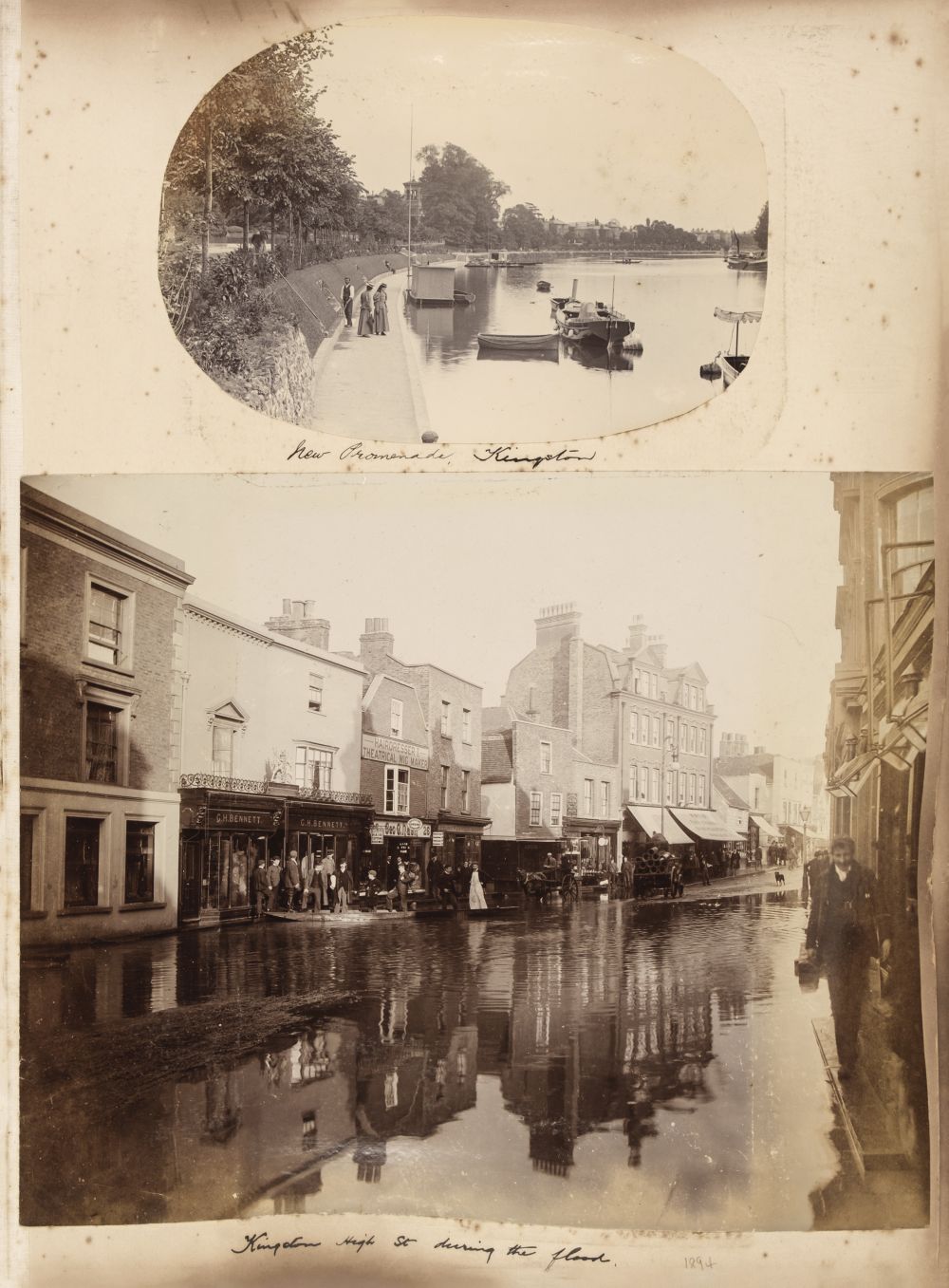Album of approx. 20 leaves, containing a total of 105 original tipped in b&w photographs with captions printed in white, most measuring 7.5x12 cm, (3x4½"), a few larger. (8vo), black leather covered boards, metal hinges. With 59 photographs of various scenes of storm damage/disasters, being 41 photographs from the Connecticut River Valley flood of 1936, and 18 photographs of the Hurricane of 1938. Together with 46 photographs of World War I images/soldiers, including Camp Vail 1917-1918. Camp Vail: The US Army recognized at the beginning of World War I that the Signal Corps strength of less than 2,000 officers and enlisted men was not able to provide the necessary communications support should the United States enter the war. In October 1916, the Office of the Chief Signal Officer asked executives of private sector communications companies to recruit from among their trained employees for a Signal Enlisted Reserve Corps. The response was greater than expected with 1,400 male employees of the Bell Company of Pennsylvania applying for enlistment. The Signal Corps needed places to prepare these citizen soldiers for service in battle. Four camps were established: one in Little Silver, NJ. A training camp was established on a portion of the site of the former Monmouth Park Race Track. The first 32 Signal Soldiers arrived at the site in June 1917, first known as Camp Little Silver. By the end of the month, 451 enlisted men and 25 officers were stationed there. The camp sent its first units to the Hoboken, NJ Port of Embarkation in August 1917. In September, the camp was renamed Camp Alfred Vail, for an individual prominent in the history of telegraphy who worked with Samuel FB Morse in developing the commercial telegraph. After the end of the war, Camp Vail became one of the original components of the Army's chief communications post, Fort Monmouth.
Album of approx. 20 leaves, containing a total of 105 original tipped in b&w photographs with captions printed in white, most measuring 7.5x12 cm, (3x4½"), a few larger. (8vo), black leather covered boards, metal hinges. With 59 photographs of various scenes of storm damage/disasters, being 41 photographs from the Connecticut River Valley flood of 1936, and 18 photographs of the Hurricane of 1938. Together with 46 photographs of World War I images/soldiers, including Camp Vail 1917-1918. Camp Vail: The US Army recognized at the beginning of World War I that the Signal Corps strength of less than 2,000 officers and enlisted men was not able to provide the necessary communications support should the United States enter the war. In October 1916, the Office of the Chief Signal Officer asked executives of private sector communications companies to recruit from among their trained employees for a Signal Enlisted Reserve Corps. The response was greater than expected with 1,400 male employees of the Bell Company of Pennsylvania applying for enlistment. The Signal Corps needed places to prepare these citizen soldiers for service in battle. Four camps were established: one in Little Silver, NJ. A training camp was established on a portion of the site of the former Monmouth Park Race Track. The first 32 Signal Soldiers arrived at the site in June 1917, first known as Camp Little Silver. By the end of the month, 451 enlisted men and 25 officers were stationed there. The camp sent its first units to the Hoboken, NJ Port of Embarkation in August 1917. In September, the camp was renamed Camp Alfred Vail, for an individual prominent in the history of telegraphy who worked with Samuel FB Morse in developing the commercial telegraph. After the end of the war, Camp Vail became one of the original components of the Army's chief communications post, Fort Monmouth.















Testen Sie LotSearch und seine Premium-Features 7 Tage - ohne Kosten!
Lassen Sie sich automatisch über neue Objekte in kommenden Auktionen benachrichtigen.
Suchauftrag anlegen